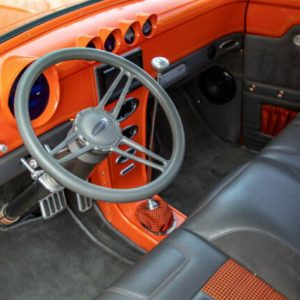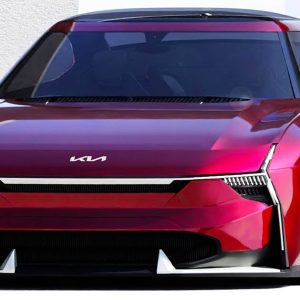Equipped with four electric motors and quattro drive, the Audi AI:Trail quattro emerged as one of the most innovative concept cars showcased at the IAA Frankfurt Motorshow.
This futuristic vehicle, designed to seat four individuals, seamlessly integrates automated driving capabilities with exceptional off-road performance. With its uniquely designed glass cabin, extending to ground level, it offers unparalleled panoramic visibility. Furthermore, its substantial battery capacity guarantees an extensive range, making it suitable for journeys in remote areas with limited access to charging infrastructure.










































The “Trail” part of the name evokes the idea of exploring nature. That is why there are no big screens onboard for streaming TV series or videoconferencing; instead, broad glass surfaces provide a clear view of the surroundings.

Marc Lichte, Audi’s Head of Design, describes the concept car: “With the AI:Trail, we are showing an off-road concept with an emissions-free electric drive for an innovative driving experience away from paved roads. Consistent with this, we designed a monolithic basic vehicle body with maximum glazing to create an intense connection to the surroundings. A concept for sustainable mobility on demand.”
With an exterior length of 4.15 meters (13.5 ft) and a width of 2.15 meters (7.05 ft), the Audi AI:Trail’s potential away from paved roads is apparent. The roof height of 1.67 meters (5.5 ft) and the 22-inch wheels with 850 mm (33.5 in) tires hint at the vehicle’s off-road capabilities even when it is standing still. With a ground clearance of an impressive 34 cm (13.4 in), it can ford through water more than half a meter (1.6 ft) deep.


On rough, rocky terrain, this architecture provides agility without the battery unit integrated in the floor coming into contact with the ground.

The cabin itself is a glazed space surrounded by polygonal shapes, with room for up to four people. One special feature is the protruding ridge halfway up the side windows. This line continues to both the front and rear and acts as a waistline uniting the entire body in one monolithic whole. With the electric drive system arranged around the axles and the battery in the floor, there is no need for overhanging sections or separate attachments for the motor or batteries.

The body of the Audi AI:Trail is made of a mixture of high-tech steel, aluminium and carbon fibre. It weighs 1,750 kilograms (3,858.09 lb) with the high-capacity battery.

The interior of the Audi AI:Trail is spacious, and it has just a few visible control elements. There are two seat shells in the front row, both equipped with four-point seat belts. Light colors dominate the upper interior area down to the level of the seat cushion and the low dashboard.

The instruments and controls are reduced to a minimum: pedals, a yoke for a steering wheel, a few buttons, and a smartphone attached to the steering column as a display and control center for vehicle functions and navigation.
Like in previous concept cars, the Audi designers also use recycled materials in the AI:Trail. The carpet is made of reprocessed wool with recycled leather, both of which are sustainable and durable, and feature excellent acoustic and climatic properties.

There is storage space between the seats and also under the windshield. Tensioning straps secure any stowed objects, which can also be loaded from the outside through the upward-folding windshield. Seat belt retractors ensure that the tensioning straps always have optimum tension.

The Audi AI:Trail is intended for use in areas without charging infrastructure, the range is 400 to 500 kilometers (248.5 to 310.7 mi) on roads or easy off-road terrain (in line with the WLTP). On rough ground, where the energy consumption is higher, the limit is 250 kilometers (155.3 mi).

To meet these requirements, the vehicle is designed to reach a maximum speed of 130 km/h (80.8 mph) on the road.
The Audi AI:Trail is equipped with four electric motors installed near the wheels, each of which propels one wheel directly so the off-roader has quattro all-wheel-drive. The maximum system output is 320 kilowatts and the maximum torque is 1,000 Nm (737.6 lb-ft).





